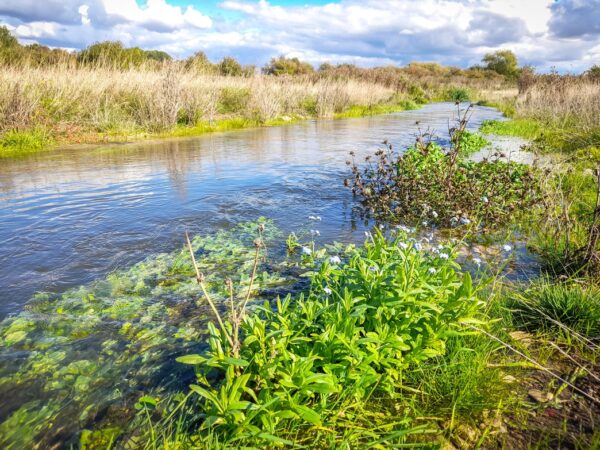A new project to create a new channel of the River Thames and restore long-lost wildlife habitat has been completed. The 450-metre watercourse in West Oxfordshire bypasses a manmade weir and will enable fish to swim along a 30km stretch of the Thames and spawn for the first time in more than a century.
Created by the Berkshire, Buckinghamshire & Oxfordshire Wildlife Trust (BBOWT) in a £2 million project at its flagship Chimney Meadows Nature Reserve near Bampton, the channel is already being populated by native fish, birds and mammals. (photo: Lisa Lane)
Working with the Environment Agency, the Trust also created shallow temporary pools called scrapes near the channel. The project has re-established a naturally functioning floodplain habitat which was once common across the UK but was destroyed as rivers were straightened, land was drained and connection with floodplain was lost.
Research to show floodplains can store carbon
This wetland is now able to store floodwater for longer, helping to protect homes and land from flooding which is predicted to worsen as a result of climate change. The Trust is also working in partnership with Bangor University and the EA who are undertaking research to demonstrate that active floodplains can store carbon and be part of the solution to the climate crisis.
Barbel, chub and dace are helped
The new channel, in combination with a new rock pool fish pass at Duxford Ford, will allow fish to pass some of the last remaining barriers on the Upper Thames. Fish will now be able to freely swim around the Duxford Loop of the river, even during low water levels, to access some 30km of Thames between Eynsham and Radcot, including 2.1km of potentially good spawning habitat. Crucially, this helps populations of native species including barbel, chub and dace to be far more resilient to environmental change such as hotter, drier summers, and to pollution events.
Further information on the scheme from BBOWT can be read here.
